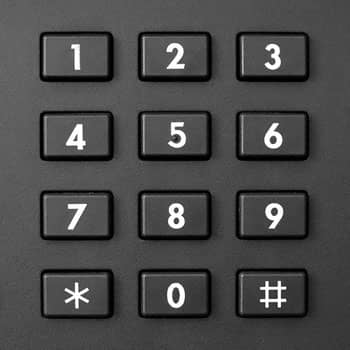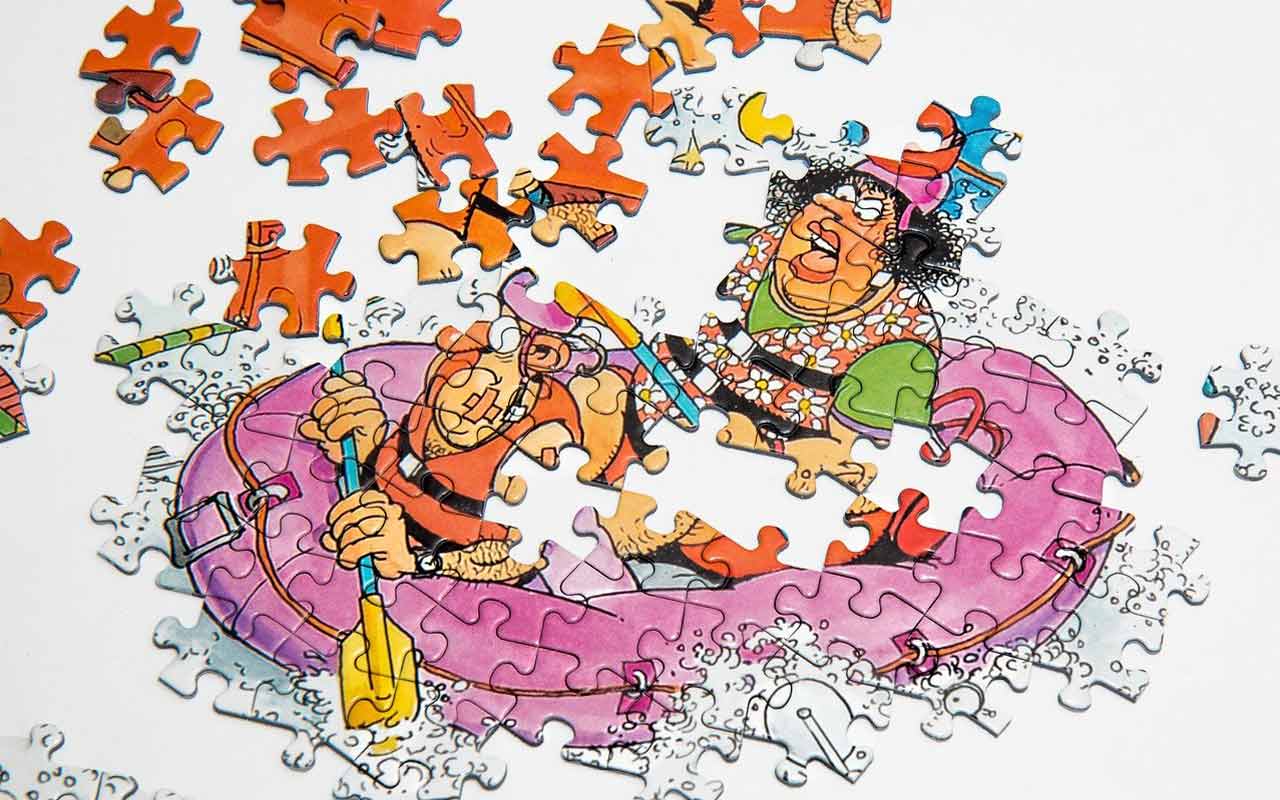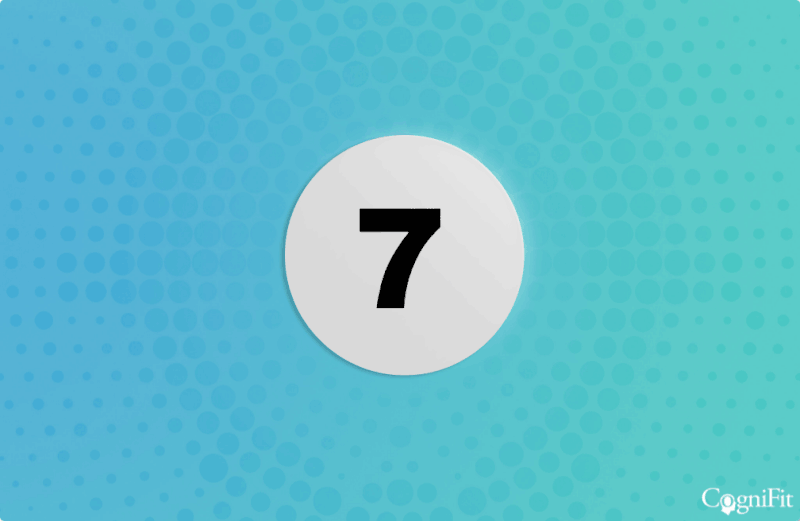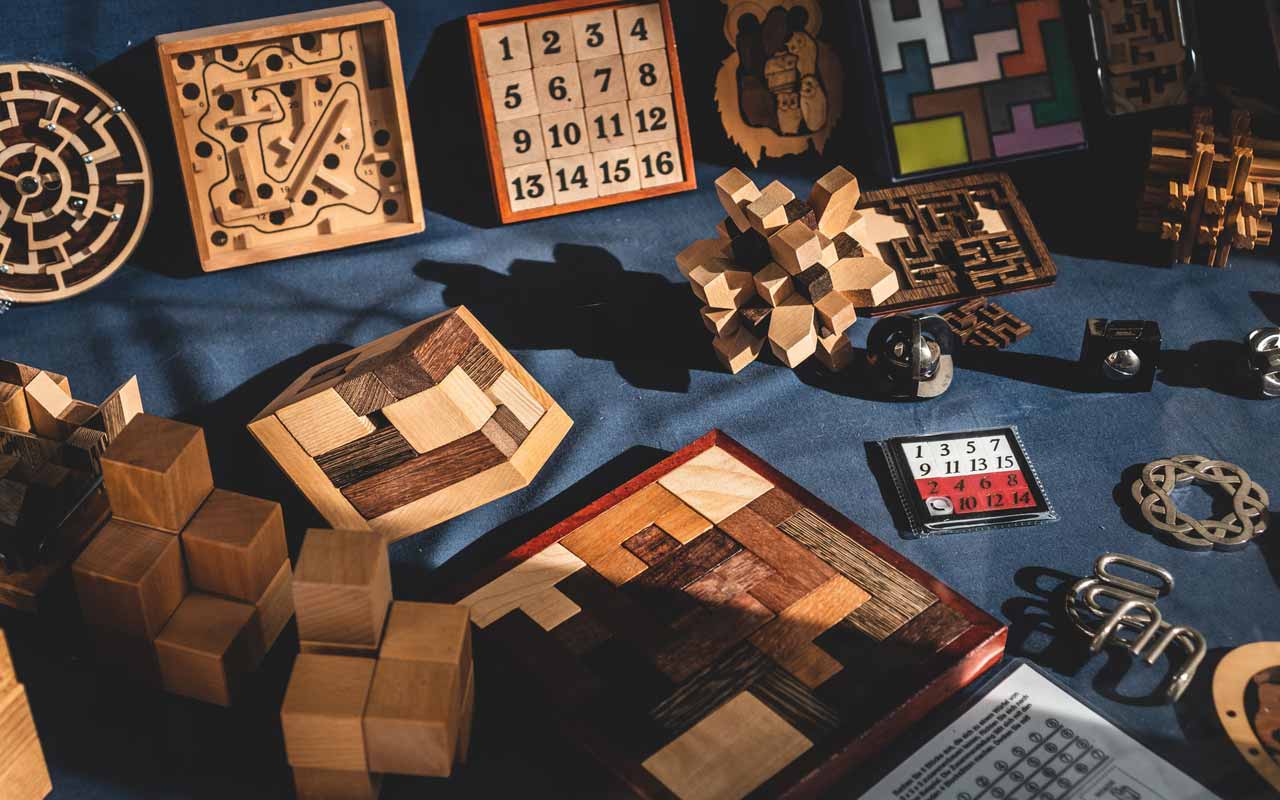 Lost your car keys — and caught yourself saying ‘Not again!’?
Lost your car keys — and caught yourself saying ‘Not again!’?
Unable to remember a recipe that you followed last week?
Finding it difficult to read a paragraph recently?
If this happens a lot, you might feel like you’re losing your memory!
But don’t worry! There are a large number of memory number tests that can help you determine to what extent your memory is serving you well.
On this page, I’ll first explain what working memory is, and how a memory number test can help you solve any memory problem you may have.
I’ll also introduce you to other memory tests and a powerful technique that will help you boost your brainpower and work to prevent future memory loss.
Here’s what this post will cover:
- What Is Working Memory?
- What Are Memory Tests?
- What Are The Different Types Of Working Memory Number Tests?
- What Causes Working Memory Loss?
- 3 Memorization Techniques To Help Sharpen Your Memory
Ready to test your working memory? Let’s get started.
What is Working Memory & How Do You Test It?
Let’s say you’re driving down a street, and all of a sudden, you get rear-ended by another vehicle!
As the car speeds off, you just have a few seconds to look at its license plate, identify the make and the model – all the while you’re trying to locate your phone or notepad.
Then you have to write down all the details (time, location, car color, license plate, etc.) before you forget.
And later that day, you piece together all that information and form a coherent story that you can tell your friends, family and the police, of course.
What you did there was use your ‘working memory’.
Working memory is the function of short-term memory that lets us store information, as well as manipulate the data in order to perfect complex tasks.
In his 2013 Ted Talk, educational psychology professor, Peter Doolittle broke down working memory into four parts:
- Storing the immediate experience into short-term memory (experiencing the accident)
- Reaching back into long-term memory (identifying the car)
- Processing the experience and memories together (making sense of what just happened)
- Applying the meaning from this process to the task (writing it down/telling the story)
If you have a good working memory, you’ll be able to process the information better and pick out what details are crucial to the story, and block out all the rest.
So is it any wonder that those with good working memory are good storytellers?
Not just that, they also score higher at standardized tests. And here’s the kicker: studies have shown that people with high-functioning working memory also have higher general intelligence!
In fact, neuropsychologist Tracy Alloway thinks working memory tests can gauge our cognitive skills better than IQ tests.
What’s The Difference Between Working Memory And Short-Term Memory?
These two types of memory might seem similar, but there is a key difference.
In 1968, the Atkinson-Shiffrin model described short-term memory as the ability to merely store limited information in your brain temporarily for a few seconds or minutes.
However, in 1974, Alan Baddeley & Graham Hitch presented a much more accurate model of short-term memory.
Their model says that working memory is the ability to not just store limited information. Working memory also process information, helps you make decisions, and solve problems.
Powerful stuff, right? Just one more reason why we need to understand why the different levels of our memory are so important.
And because working memory is such an important part of our lives, we need to make an effort to keep it sharp.
But when I exercise my memory, I don’t do so in a willy-nilly manner. I need to establish some kind of baseline first. And I recommend that you do too.
That way, regularly assessing your memory health will give you clues that lead to choosing specific activities that keep your memory fitness high.
One way to establish a baseline is to complete a variety of cognitive tests.
Here’s Another Major Reason You Should You Test Your Memory Capacity
It’s not that difficult to remember a 5-9 digit phone number someone has just told you, right?
That depends on how sharp your memory is. But it becomes harder when you need to remember a barcode with more than 10 digits.
Why is that?
According to psychologist George Miller, the ‘magical’ number of items (or digit span) that you can hold in your short term and working memory is 7±2. (In case you recognize the name, it’s probably because Miller is well-known for his research on how humans often use chunking to remember information.
Whether you use chunking or not, chances are that your working memory capacity is the same.
But how do you know for sure?
It’s important to test your memory capacity, to know the limitations of your memory span. When you have a clear picture of your memory capacity, you can work towards improving it.
However, this isn’t the only reason why you need to test your working memory capacity.
If you’re concerned that you’re being increasingly forgetful recently, you can use cognitive tests to rule out any memory disorders.
Through these cognitive tests, you can try different improvement methods, and test which techniques help you get a higher score.
This way you’ll be able to figure out the best memory improvement technique for you!
Also, memory tests coupled with memorization techniques can even boost your long-term memory retention too!
What Are Memory Tests?
Memory tests are short exercises that help you figure how good your memory really is.
Over hundreds of years, psychologists and neuroscientists have created tests to identify cognitive impairment in patients after a traumatic brain injury. These tests allow them to give their diagnosis after a comprehensive evaluation.
But now, you don’t need to show signs of memory impairment to try out these tests. There are tons of memory testing tools that can be used by anyone online.
3 Types Of Memory Tests
Let’s take a quick look at the different types of memory tests.
1. Short-Term Memory Test
Objects in your short-term memory are generally stored for around 20-30 seconds.
So these tests are generally straightforward.
You’ll have to memorize a list of numbers, names, or objects in a short period of time.
Then, you will be asked to write down what items you saw, and don’t worry, it doesn’t always have to be in order.
2. Long-Term Memory Test
Long-term memory refers to storing information in your brain for more than a few minutes.
In a long-term memory test, you’ll be shown a few objects, numbers, letters, or words, and be asked to recall them after 5 minutes or even more.
3. Working Memory Test
Having a good working memory makes it easier to deal with our day-to-day.
We use working memory when we’re driving, writing essays, studying, following a recipe, learning a language, and more.
Working memory tests are slightly more complicated than short-term memory tests. Here, you need to not only memorize and recall information, but you need to do some arithmetic and logical problem solving too.
To take a look at an example of these tests, let’s get back to Professor Doolittle’s TED talk.
He asks the audience to remember 5 words: ‘Tree’, ‘Highway’, ‘Mirror’, ‘Saturn’, ‘Electrode’.
Then without a beat, he asks them to solve a basic multiplication problem.
After that, he asks them to take out their left hand, and count up to 10 on their hand.
And finally, he asks them to recite the last 5 letters of the alphabet backward.
After this gauntlet of tasks, he asks the audience whether they still remember all the words – only half of them did!
If only they visualized the words as images, they would have been able to recall the words effortlessly!
Let’s take a closer look at other examples of working memory tests, specifically working memory number tests.
What Are The Different Types Of Working Memory Number Tests?
Here are some tests that you can practice to improve working memory, so you can improve the quality of your life too.
A. Sequencing Test
This test is based on the Wechsler Memory Scale which is used to test different memory functions in adults. The sequencing assessment is used to test your brain’s response time and processing speed — both of which are important parts of working memory.
Here’s how it works:
Step 1:
You see a set of 2 balls with different numbers appearing on the screen in a sequence.
Step 2:
You quickly memorize the order of appearance.
Step 3:
You recall and reproduce the set of numbers in the correct order.
Step 4:
Now you see a set of 3 balls, and you need to memorize the order.
Step 5:
This number of balls increases every round until you get it wrong.
If you think about it, it’s kind of like the Simon game we played as kids.
B. N-back Test
N-back is one of the most popular working memory tests. It requires you to hold objects in memory and retrieve them when needed.
Here’s how the n-back test works:
Step 1:
You are shown a string of numbers, for example: ‘23’, ‘56’. ‘92’.
Step 2:
You are asked what number you saw ‘n’ numbers ago, for example: ‘2’ numbers ago.
Here the answer would be 56.
Step 3:
You are shown a new number, for example ‘88’. So now the string of numbers in your head should be: ‘23’, ‘56’, ‘92’, 88’.
Step 4:
You are again asked what number you saw ‘n’ numbers ago, maybe this ‘n’ can be 4. Here the answer is 23.
Step 5:
Another new number is added, and another question is asked. This continues until you’re no longer able to keep track of the numbers.
Want to make it even more complex?
Instead of one string, you can have 2 strings of numbers to memorize. One can be shown visually, and the other sequence can be heard, thereby using 2 stimuli.
Each round new numbers are added to the sequences. This is called the ‘dual n-back test’.
This seems more effective, as a present study suggests practicing the dual n-back test, can boost working memory by 30%!
For another version of this test using playing cards, one that I use to test and exercise my memory a couple of times a month, I demonstrate a dual n-back variation in this video all about the classic memory activities I love for keeping my memory sharp:
C. Digit Span Test
This is a great memory testing tool for children and older adults alike.
Here’s how the digit span test works:
Step 1:
A sequence of numbers flashes on the screen in quick succession.
Step 2:
You need to input the sequence of numbers in order, until there’s an error.
To make the digit span test even more challenging, you might be asked to input the sequence in reverse.
The digit span task can be used to test your verbal working memory. An examiner can read out a list of numbers, and you would have to repeat the numbers in the correct order.
It’s also used by researchers to study patients with cognitive impairment and memory loss.
Alternative Memory Tests Offered By Memory Experts
If you’ve ever read a memory improvement book, you’ve probably seen one of those exercises where they list a bunch of random words or numbers.
Let me be direct with you: I don’t find these kinds of memory tests all that useful.
As I discussed in my podcast about the different types of observation and how they connect to memory, many studies exist demonstrating that random people can recall lists of information with approximately 20% accuracy.
When participants use some kind or rote repetition, their success rate tends to rise to about 40%.
Using formal mnemonic techniques like the Memory Palace, researchers like Dr. David Reser and Tyson Yunkaporta found recall and retention rates of up to 80% and higher.
Based on their findings, I’d suggest you include some of these tests in order to fully flesh out a memory improvement plan.
Rating Your Overall Memory
The first test I suggest involves rating how you feel about your current memory skills right now.
To do so, use a system like 1-10 or 1-100. If you prefer, you can use a D- to A+ approach. The exact rating system doesn’t matter so long as you have a means of assessing the current state of your memory.
Once you have a score, commit to making marginal improvements and set goals. You might choose to improve a score of 2.5 to 5 for example. To do so, you can practice memorizing the digits of pi as a simple activity. Or you can practice memorizing playing cards or learn the guitar fretboard.
There are many activities to choose from. I just suggest that you make sure they align with your larger goals. Many activities will sharpen your brain, but the most meaningful are those that lead you to yet another layer of accomplishment.
Test Your Memory For Specific Outcomes
A much more targeted way to test your memory involves asking questions like these, ideally with long answers that stimulate reflective thinking.
- How much of yesterday’s activities do you remember?
- Can you recall the phone numbers of at least 10 important people in your life?
- Can you recite the plot of the last novel you read or movie you viewed?
- How many of your family’s birthdates can you remember?
- How easily do you remember future appointments and your to-do list?
By asking and answering questions like these, you’re giving yourself a much more authentic memory test. This approach will give you many more clues to what activities will be best for you to pursue.
You’ll also want to understand more about why you might be losing your memory abilities. To help you with that, let’s look now at the factors that are typically responsible for working memory loss.
What Causes Working Memory Loss?
Turns out old age isn’t the only factor that can cause memory impairment! There are quite a few health and lifestyle-related reasons responsible for memory loss and cognitive decline.
Let’s look at some of them.
1. Dementia in Older Adults
Patients with Lewy body dementia show greater signs of memory impairment as compared to patients with Alzheimer’s disease. In fact, memory loss is a major symptom of Lewy body dementia, as well as vascular dementia.
2. Parkinson’s Disease
This disease has been linked to spatial WM impairment (memory required to navigate through an environment).
3. ADD/ADHD in Kids and Adults
Attention deficit disorder can cause deficits in working memory in kids and adults. Those with ADD and ADHD have difficulty focusing, organizing information, recalling information — which are all key functions of working memory.
To help reduce this cognitive impairment in children with ADHD, a few working memory training techniques are undergoing clinical trials.
4. Depression
Depression is known to affect working memory capacity and cause difficulties in concentration. Bipolar affective disorders can also be responsible for the impairment of working memory.
The saddest thing about depression is that it effects all levels of memory, especially working memory and short-term memory. That’s sad because even though I have exercises that help restore short-term memory, for example, people suffering depression are often disinclined to complete them due to the nature of this health issue.
But it’s not impossible to get yourself to take action. Many people have found that my success in battling depression has been helpful. I shared it in this TEDx Talk and in The Victorious Mind.
5. Stress
Stress’s relationship with working memory is a bit complicated, as is the problems anxiety poses for memory. While stress does reduce our response time, it can cause us to make more mistakes than usual.
6. Lack of Sleep
According to a 2007 study, sleep deprivation not only impairs attention and working memory, it also affects our long-term memory and decision making abilities.
Anxious that any of these factors might be affecting your memory?
We have good news! You can weaken their grip on your memory with the help of a few easy techniques.
3 Memorization Techniques To Help Sharpen Your Memory
Even if we’re healthy or don’t have any pre-existing disease, we still might struggle with our memory abilities.
Why is that?
The answer is pretty simple: It’s a lack of memory exercise!
I don’t mean playing brain games on your smartphone. Playing exercise games is not always brain exercise. And a 2017 study has proved studies have shown that they don’t even work!
Don’t worry, here are some memory exercises that actually do the job.
1. Number Brain Exercises
These exercises can be used to boost logical thinking and concentration, and the best part is that it’s fun!
Here’s how it works:
Pick any 3-digit number.
Add 3 the number 3 times. And then minus 7 from the result number 7 times.
Repeat this process 5 times, and then pick another 3-digit number.
Too easy?
Try this exercise with a 4-digit number, and add or subtract larger numbers.
This exercise is a great workout for your working memory, because of the amount of information you need to hold in your brain.
2. Repeat and Recall
Everybody likes a good listener, right?
This exercise can not only improve your working memory, but can also help you be more present ‘in the moment.’
Try this:
When someone is talking to you, focus on the words being spoken and silently repeat and speak them in your mind.
This exercise is a super-effective way to boost your cognitive function and you’ll never forget a thing your friend or partner said to you, ever!
3. Memory Palaces
This is the ultimate memory training exercise there is. Creating a memory palace challenges your visual and spatial memory.
Not only that, it unlocks your episodic memory, semantic memory, procedural memory – so you can store information in your long-term memory faster and more efficiently.
How does it work?
The basic idea behind a memory palace is to associate pieces of data with a location that you know well. For example: your bedroom.
When you close your eyes, you can picture your room well — you know where the furniture is placed, the color of the objects, and where your stuff is placed.
The memory palace technique requires you to associate information with areas of that room.
As you mentally walk through the location, you can place information you wish to memorize in specific areas of the room. When you want to retrieve the information, you have to follow the mental route, and access it.
Sounds interesting, doesn’t it? Check this out:
You can use memory palaces to memorize an entire monologue, or learn a new language.
Or use it to pull off impressive stunts — like memorizing every American president!
The choice is yours.
A Memory Palace is a powerful tool that you can use for a lifetime. Once you’ve created and mastered one, you can make dozens more to improve your life.
Then you can go on to add other tools, like the Dominic System for memorizing numbers.
Is a Memory Number Test for You?
A memory number test doesn’t necessarily improve your working memory right away. However, they are an important tool to help you gauge your memory capacity.
Knowing is just half the battle, right?
You then need to practice many memory exercises simultaneously — and see which methods help you ace the memory number tests. And the better you get at these, the more razor-sharp your working memory gets!
And remember, you can pick up your free copy of my memory improvement kit today and be well on your way to a fantastic working memory. You get videos, worksheets, and other materials to start creating your own memory palaces in no time!
Related Posts
- Memory Athlete Braden Adams On The Benefits Of Memory Competition
Braden Adams is one of the most impressive memory athletes of recent times. Learn to…
- 2019 Canadian Memory Champion Reveals His Memory Secrets
James Gerwing completed the Magnetic Memory Method Masterclass a while ago. In 2019, he became…
- What If You Could Memorize Just One Word Continued
Here are some of the submissions I received when I asked people what if they…













